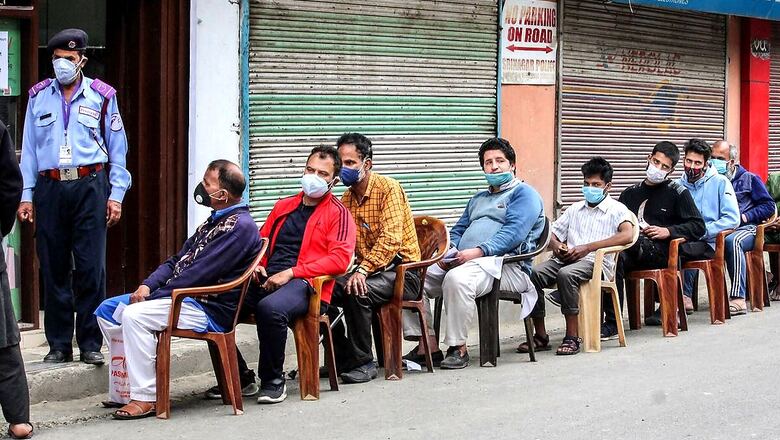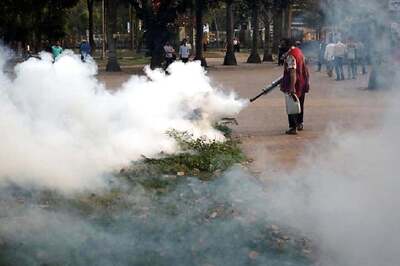
views
On the eve of Eid, when the people of Jammu & Kashmir and entire world are grappling with the deadly pandemic that is continuing to cause widespread loss of precious human lives, there is some faint ray of hope emerging for the future of Kashmir valley. The younger generation of Kashmir might actually be unwittingly getting integrated with the national mainstream of India and that might be actually a positive news for a sustainable peace and tranquility to prevail in Kashmir valley after three decades of death and destruction.
At the crux of Kashmir problem lies the eternal quest of the policy makers in New Delhi to find ways and means to meaningfully integrate Kashmiris with the national and cultural mainstream of India. This is a goal that most policy makers have been desiring to achieve for a long term – sustainable integration of Kashmir and Kashmiris with India – but with little success.
An interesting phenomenon, the beginning of which was made even before the abolition of Article 370 on August 5th, 2019 has been an increased participation of Kashmiri Muslim youth in affairs and events of mainland India, which Kashmiris never used to do even during peaceful decades of 1950s to 70s.
A typical Kashmiri has traditionally kept himself aloof from whatever political, cultural or social happenings that took place in India. Bombay’s film industry and Bollywood movie stars have been thronging to Kashmir valley since 1950s for shooting and every year thousands of tourists from mainland India would visit Kashmir during summer till late 1980s.
Yet despite that the people of Kashmir kept themselves at bay with political and cultural events happening in mainland India. Kashmiri Muslim in particular, didn’t even maintain much social or marital relations with Muslims from mainland India for many decades since independence. This state of affairs continued after the advent of separatism and militancy in Kashmir valley that further alienated Kashmiris and made them even less interested in affairs of mainland India.
This is however changing.
A new breed of younger Kashmiri men and women, who are studying in educational institutes of mainland India that include not just Muslim oriented institutions like Jamia, Osmania and AMU but even secular institutions like JNU, DU or many other private educational institutes are not only showing a keen interest in social, cultural and political happenings in urban areas of mainland India, but they are also actively participating in them and expressing their opinion about them.
The same Kashmiri Muslim, who showed no interest in Mumbai anti-Muslim or Gujarat anti-Muslim riots in 1990s and early 2000s took an active part in last year’s anti CAA protests in Delhi. Kashmiri student community studying in Jamia and AMU were at the forefront of anti-CAA protests and were its prominent face.
Even prior to that Kashmiris, especially Kashmiri Muslims could now be seen making their presence felt across the wide spectrum of cultural, sporting, activism space in mainland India. From leftist politics of JNU (Sheila Rashid) to TV industry (Hina Khan) to movie industry (Zaira Wasim) to many prominent journalists, activists, influencers, artists, musicians, authors, both Kashmiri Muslims and Kashmiri Pundits are now prominent face of national mainstream activities. They are strongly voicing their opinion and even criticism on various issues that concern Kashmir and people of Kashmir. Unlike in the past they are not keeping aloof and disenchanted but are aggressively making their space in the national discourse.
More recently, Kashmiri Muslims living in Srinagar, Jammu, Delhi and other Indian cities could also be seen using Twitter to amplify request for beds and oxygen cylinders for Coronavirus patients that included not only Kashmiris but also non-Kashmiris from mainland India. Not just high-profile Kashmiris but also ordinary Kashmiris like students, businessmen or Kashmirs working in companies across India could be seen caring and participating like many other Indians in trying to help others amidst raging pandemic.
This is an indication that younger generation of Kashmiri youth despite continuing their grievance against decades state high handedness that has left many unanswered questions relating to suffering of ordinary Kashmiri people, the younger generation of Kashmir is breaking the shackles of the past and is finally seeking a stake in mainland India but on his own terms and in his own way. He or she is not totally disassociating his links with mainland India but has now selectively started rooting himself with those happenings taking place in India, with which he can emotionally and culturally relate to and engage with. This is an important development.
It is also important to note that it is not prudent to expect Kashmiris to integrate with Indian cultural, social and political mainstream in direct and positive manner given the three-decade old history of militancy and related grievances that Kashmiri people have with the Indian state. Yet, the younger generation of Kashmiris is reaching out to mainland India after all these decades.
The common religious interests of Kashmiri Muslims and Muslims of mainland India and their causes and concerns have finally built the bridge between Muslims of Kashmir and mainland India, which will indeed be strengthened over time.
This is evidenced by ever growing number of Kashmiri Muslims visiting and making annual religious trips or pilgrimages at various prominent Sufi shrines of mainland India including shrine of Khawaja Ghareeb Nawaz at Ajmer in Rajasthan, Hazrat Nizamuddin Chisti in New Delhi and Piya Haji Ali shrine in Mumbai, Maharashtra. Kashmiri Muslims are taking small baby steps towards this “new integration” by assimilating themselves with Indian Islamic cultural, political and social issues.
If this “new integration” is to either remain sustained or pick up pace in coming time, this would augur well for Kashmir’s future. If the ordinary Kashmiri, who always has a troubled and difficult relation with accepting Indian cultural and social mainstream reaches out to national mainstream it might help stabilize situation in Kashmir valley and help its people to finally come out of the vortex of hell that has completely destroyed their lives and being in last three decades.
(Javed Beigh is a Young Political Leader and is State Secretary of People’s Democratic Front. He is also a distinguished Writer and renowned Public Speaker. He can be reached @javedbeigh across Social Media Platforms. Views expressed are his personal.)
Read all the Latest News, Breaking News and Coronavirus News here. Follow us on Facebook, Twitter and Telegram.



















Comments
0 comment